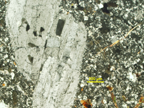 |
This rollover shows the extinction in plagioclase. The twinning makes for different extinction angles depending on the angle of the crystal, but favors inclined extinction. |
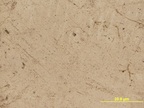 |
This rollover image shows the contrasting visibility of Plagioclase when viewed under plain polarized light versus crossed polars (second image). |
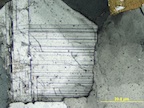 |
This rollover demonstrates the inclined extinction of Plagioclase as the microscope stage is rotated approximately 45º. The characteristic twinning of Plagioclase is also visible. |
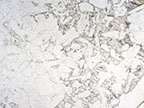 |
Photomicrograph of plagioclase in anorthosite (BV106) in plane light. Select image and then move cursor over image to view in crossed polarized light, where olivine and pyroxene inclusions may be seen. Magnification 1.5x; field of view 7.45 mm x 5.65mm. |
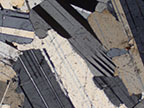 |
Photomicrograph of plagioclase in anorthosite (BV106) in crossed polarized light. Select image and move cursor over image to view twinning at extinction, then rotated 45o counterclockwise. Magnification 5x; field of view 2.25mm x 1.7 mm. |
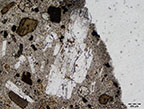 |
This rollover demonstrates the ability to see twinning when the plagioclase mineral is under crossed polars. The first image is in plane polarized light and no twinning is seen. The rollover is the same image under crossed polars and twinning is seen. The slide is from rock sample K-84. |
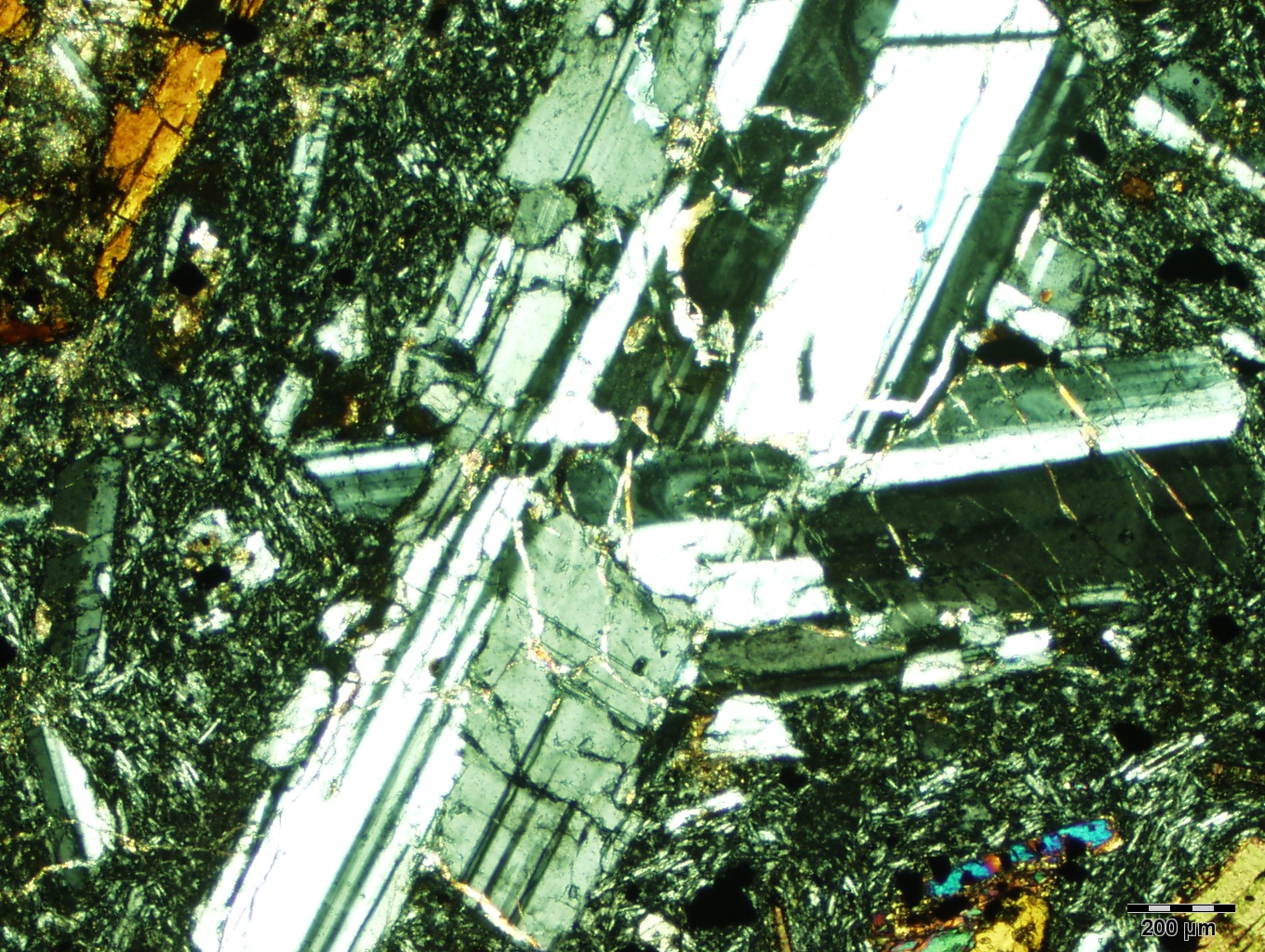 |
This rollover demonstrates extinction within the plagioclase mineral. The twins have opposite extinction. In the first image, some twins are white and the opposite ones are dark because they are extinct. The second image is the same slide rotated 45 degrees clockwise and the dark twins from the first image are now white while the white twins from the first image are now dark. The slide is from rock sample K-84. |
| WWW Images | UCL Catalogue of Minerals in Thin Section UNC Atlas of Igneous and Metamorphic Rocks, Minerals, and Textures |